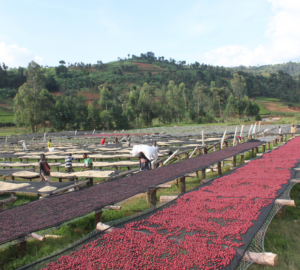What is heirloom coffee?
Heirloom coffee is a convenient (sort of) way to describe Arabica coffee plants whose variety may not be easy to ascertain. The term is of particularly abundant usage in reference to Ethiopian coffees, of which there are thousands of varieties, and where a particular producer’s output may include a broad range of these. When these coffees don’t fall into the easy categories that cultivated coffees in other growing origins do, they have often been grouped into the vague term “heirloom”.
Is there a specific criteria for what makes a heirloom coffee?
Like other so-called heirloom plants, such as tomatoes or peppers, heirloom suggests a plant that has been grown in a specific geographical area for—typically—several generations within that same geographical area, by the same farming family or group. For heirloom coffees, there is not a specific date or age cutoff that determines when a cultivar is said to become “heirloom”. Rather, it must meet the criteria of being a regionally specific, family or community specific plant that has been grown over generations of time.
Agronomist and author Getu Bekele, co-author of the book A Reference Guide to Ethiopian Coffee Varieties, refers to this as meeting both the criteria of “time and space.”
Do other countries have heirloom varieties besides Ethiopia?
Sort of, but not in the same way. In Ethiopia, a country with an epically long history of growing Arabica coffee, it is common to classify coffee by regional attributes—e.g. Sidamo, Guji, Yirgacheffe—rather than by the names of cultivars. This isn’t the practice worldwide.
“Outside of Ethiopia, it is pretty common to refer coffee varieties using their breeding names; a name given by breeders,” says Bekele. “In most of the coffee producing countries in Africa and South America, coffee varieties are not described as heirloom. Ethiopia has a diverse coffee-growing agro-ecology that resulted in the creation of different geographical regions known for unique coffee flavors. The space and time concepts associated with heirloom are missing for most coffee producing countries except for Ethiopia.”
What is meant by “landrace” and when is it preferable to say that instead?
Many roasters have begun to move away from “heirloom” nomenclature and have started referring to Ethiopian coffees as “landrace”, which gives more honor to the idea of these plants as part of their evolving agricultural and environmental contexts. Many landrace varieties, for example, are named after the (regular) trees among which the coffee treelets grow, like Kurume and Dega. Others may be named after characteristics, like Buna Guracha for its blackish (guaracha in Afan Oromo language) coloring. The name landrace more closely describes a coffee’s adaptation within a particular geography than the term heirloom.
“Landrace is not bounded by the concept of time and ownership,” explains Bekele. “It is all about the presence of genetically close but still diverse coffee varieties adapting to a specific region. In Ethiopia, the reality is there is not a single coffee variety which is owned by a specific family and passed down over several generations. Rather there are a mix of different coffee varieties in a given farm and also shared among several coffee farmers residing in a wider geographical area. Here, the term landrace best describes the real nature of the Ethiopian coffee varieties,” Bekele says, adding that of course, landrace is still a catch-all term that doesn’t give a full view of the diversity of varieties within it.
Should or could “heirloom” (and landrace) coffees be broken down into more specific categories?
“This journey has already been started,” says Bekele, crediting the expansion of the specialty coffee industry and continued interest in sourcing high-quality Ethiopian coffees in advancing this movement towards greater specificity.
As Bekele and co-author Tim Hill point out in their book, reliance on the term “heirloom” can also leave the impression that scientific and agricultural progress has not been made in regards to Ethiopian coffees. This is not the case. For decades, the Jimma Agricultural Research Center (JARC) has been working to improve coffee technologies within Ethiopia through experimentation and selection, including identification of unique landraces. The more specific we are able to get when identifying Ethiopian coffees, the more successful we can be in planting and growing coffees that thrive in their respective regions (or regions with similar climate and conditions), and in predicting yield and flavor profile outcomes for producers—which in turn should reap benefits for them on the market, and for us in our cups of coffee.
Liz Clayton is the associate editor at Sprudge Media Network. Read more Liz Clayton on Sprudge.
Top photo taken from this feature, courtesy Geoff Watts of Intelligentsia Coffee.































